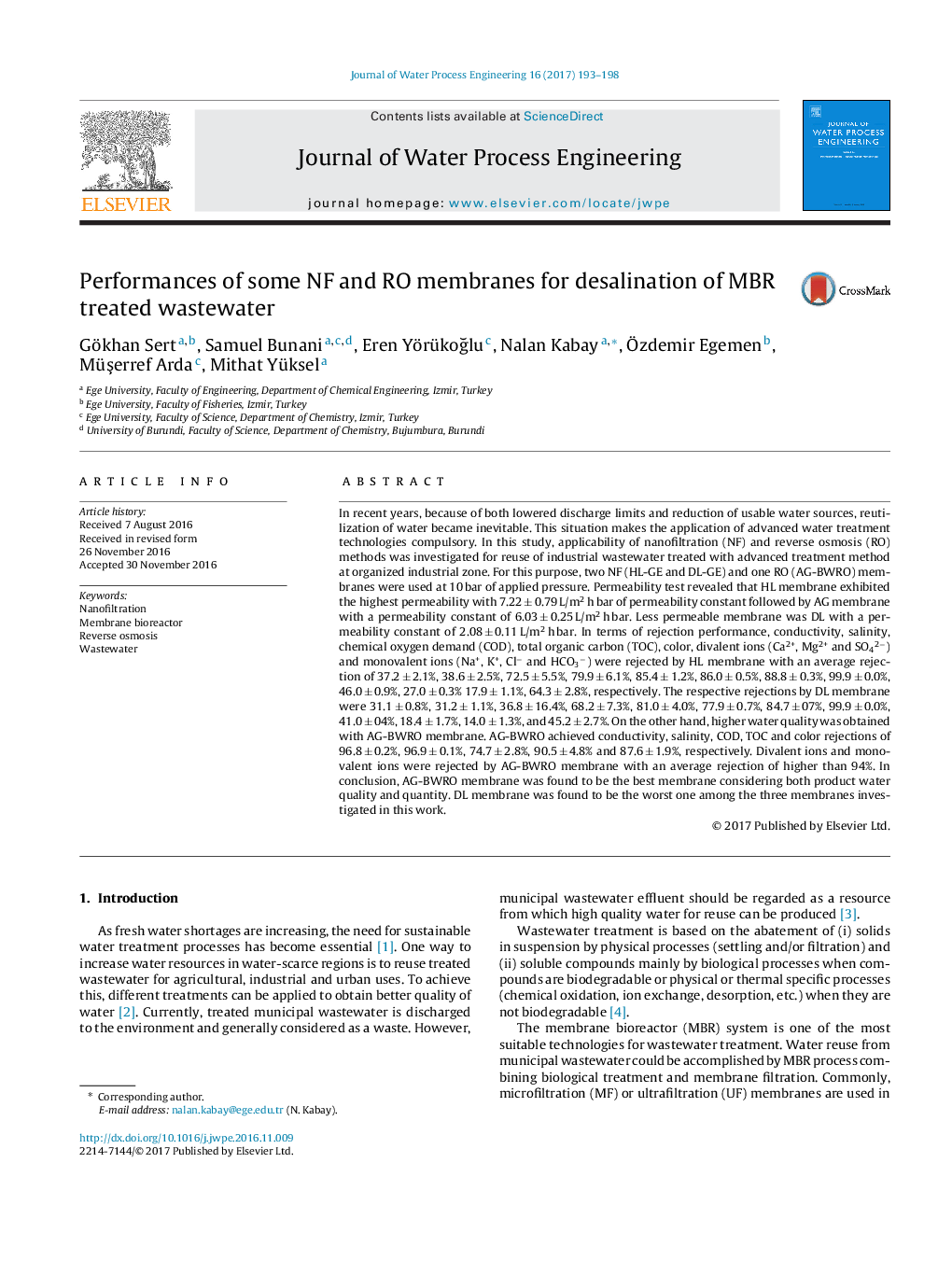| Article ID | Journal | Published Year | Pages | File Type |
|---|---|---|---|---|
| 4910071 | Journal of Water Process Engineering | 2017 | 6 Pages |
Abstract
In recent years, because of both lowered discharge limits and reduction of usable water sources, reutilization of water became inevitable. This situation makes the application of advanced water treatment technologies compulsory. In this study, applicability of nanofiltration (NF) and reverse osmosis (RO) methods was investigated for reuse of industrial wastewater treated with advanced treatment method at organized industrial zone. For this purpose, two NF (HL-GE and DL-GE) and one RO (AG-BWRO) membranes were used at 10 bar of applied pressure. Permeability test revealed that HL membrane exhibited the highest permeability with 7.22 ± 0.79 L/m2 h bar of permeability constant followed by AG membrane with a permeability constant of 6.03 ± 0.25 L/m2 h bar. Less permeable membrane was DL with a permeability constant of 2.08 ± 0.11 L/m2 h bar. In terms of rejection performance, conductivity, salinity, chemical oxygen demand (COD), total organic carbon (TOC), color, divalent ions (Ca2+, Mg2+ and SO42â) and monovalent ions (Na+, K+, Clâ and HCO3â) were rejected by HL membrane with an average rejection of 37.2 ± 2.1%, 38.6 ± 2.5%, 72.5 ± 5.5%, 79.9 ± 6.1%, 85.4 ± 1.2%, 86.0 ± 0.5%, 88.8 ± 0.3%, 99.9 ± 0.0%, 46.0 ± 0.9%, 27.0 ± 0.3% 17.9 ± 1.1%, 64.3 ± 2.8%, respectively. The respective rejections by DL membrane were 31.1 ± 0.8%, 31.2 ± 1.1%, 36.8 ± 16.4%, 68.2 ± 7.3%, 81.0 ± 4.0%, 77.9 ± 0.7%, 84.7 ± 07%, 99.9 ± 0.0%, 41.0 ± 04%, 18.4 ± 1.7%, 14.0 ± 1.3%, and 45.2 ± 2.7%. On the other hand, higher water quality was obtained with AG-BWRO membrane. AG-BWRO achieved conductivity, salinity, COD, TOC and color rejections of 96.8 ± 0.2%, 96.9 ± 0.1%, 74.7 ± 2.8%, 90.5 ± 4.8% and 87.6 ± 1.9%, respectively. Divalent ions and monovalent ions were rejected by AG-BWRO membrane with an average rejection of higher than 94%. In conclusion, AG-BWRO membrane was found to be the best membrane considering both product water quality and quantity. DL membrane was found to be the worst one among the three membranes investigated in this work.
Related Topics
Physical Sciences and Engineering
Chemical Engineering
Chemical Engineering (General)
Authors
Gökhan Sert, Samuel Bunani, Eren YörükoÄlu, Nalan Kabay, Ãzdemir Egemen, MüÅerref Arda, Mithat Yüksel,
